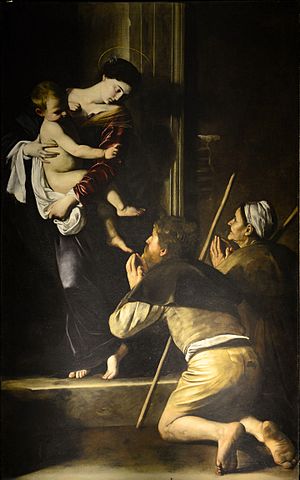I am going to make yet another confession. This one may shock, surprise or even appall those of you who know anything about me.
You see...I once took a Gender Studies course. Now that might seem like a confession in and of itself. The real "dim dark secret", though, is that I didn't complete it.
The instructor wasn't the problem: She was actually very good. For me, it was this: The readings seemed very trite. That is, once I translated them. No, I wasn't reading French or German theorists. Rather, I was rendering them from the abstruse, abstract terminology and the tortured sentence structure in which they were written--only to find that the authors were saying things I already knew or that were opinions masquerading as principles. To paraphrase Gertrude Stein, "There was no there there."
So why was I thinking about that today, as I wound my way through the rooms of the Uffizi Gallery? Well, one Michelangelo Buonarroti (yes, that Michelangelo) could have taught that class a good part of what they need to know about gender with this painting
The Holy Family with the Infant St. John The Baptist, also known as the Doni Tondo, is Michelangelo's only known panel painting. Forget about all the little nude boys in the background: Il Maestro definitely knew a thing or two about women
You guys all know, deep down, that no matter how strong or fast you are, nothing you do compares with the strength women exhibit in giving birth, raising children or doing any number of other things. I find it humbling, to say the least: Today, I cannot match the feats of strength or endurance, on my bicycle or otherwise, I could muster in my younger years. Moreover, I have not given, and cannot give, birth.
So this is a country where a woman can have an arm muscle like Popeye's, after he's eaten his spinach.
That, in a country where real men once wore skirts:

You see...I once took a Gender Studies course. Now that might seem like a confession in and of itself. The real "dim dark secret", though, is that I didn't complete it.
The instructor wasn't the problem: She was actually very good. For me, it was this: The readings seemed very trite. That is, once I translated them. No, I wasn't reading French or German theorists. Rather, I was rendering them from the abstruse, abstract terminology and the tortured sentence structure in which they were written--only to find that the authors were saying things I already knew or that were opinions masquerading as principles. To paraphrase Gertrude Stein, "There was no there there."
So why was I thinking about that today, as I wound my way through the rooms of the Uffizi Gallery? Well, one Michelangelo Buonarroti (yes, that Michelangelo) could have taught that class a good part of what they need to know about gender with this painting
The Holy Family with the Infant St. John The Baptist, also known as the Doni Tondo, is Michelangelo's only known panel painting. Forget about all the little nude boys in the background: Il Maestro definitely knew a thing or two about women
You guys all know, deep down, that no matter how strong or fast you are, nothing you do compares with the strength women exhibit in giving birth, raising children or doing any number of other things. I find it humbling, to say the least: Today, I cannot match the feats of strength or endurance, on my bicycle or otherwise, I could muster in my younger years. Moreover, I have not given, and cannot give, birth.
So this is a country where a woman can have an arm muscle like Popeye's, after he's eaten his spinach.
That, in a country where real men once wore skirts:



















